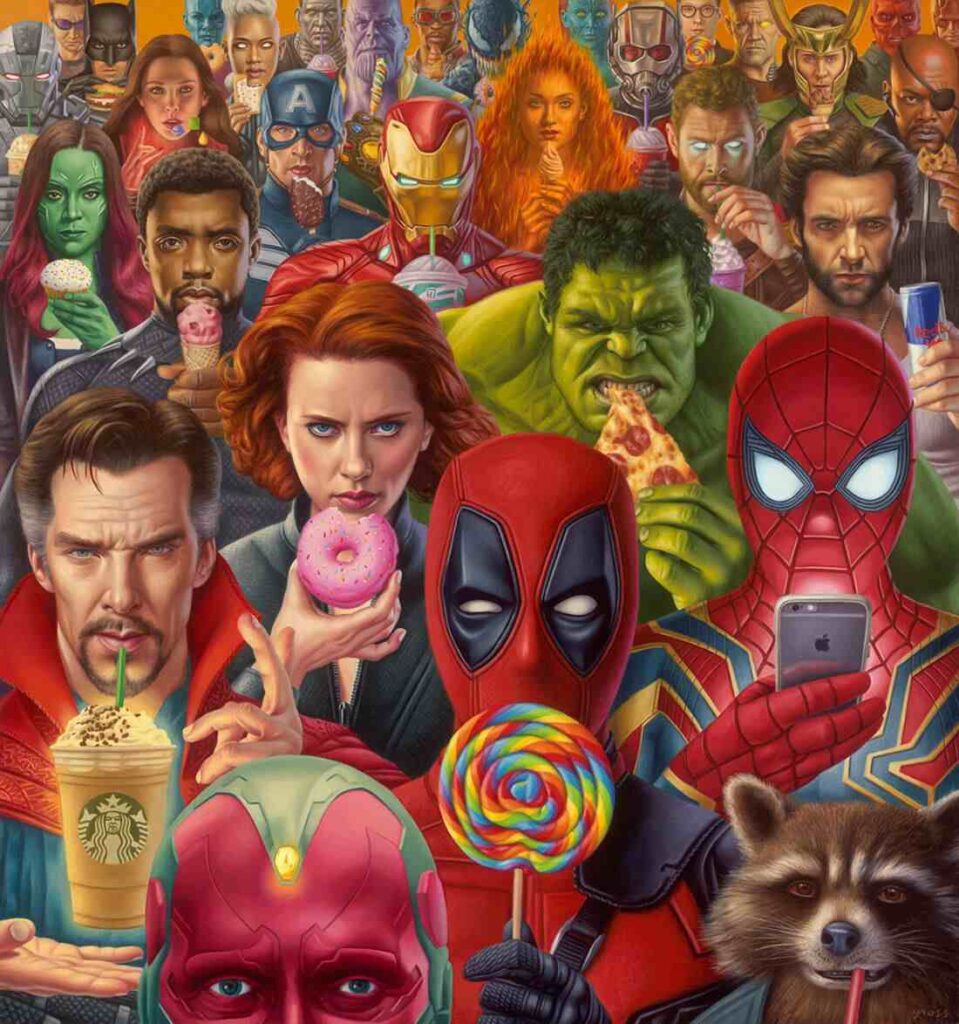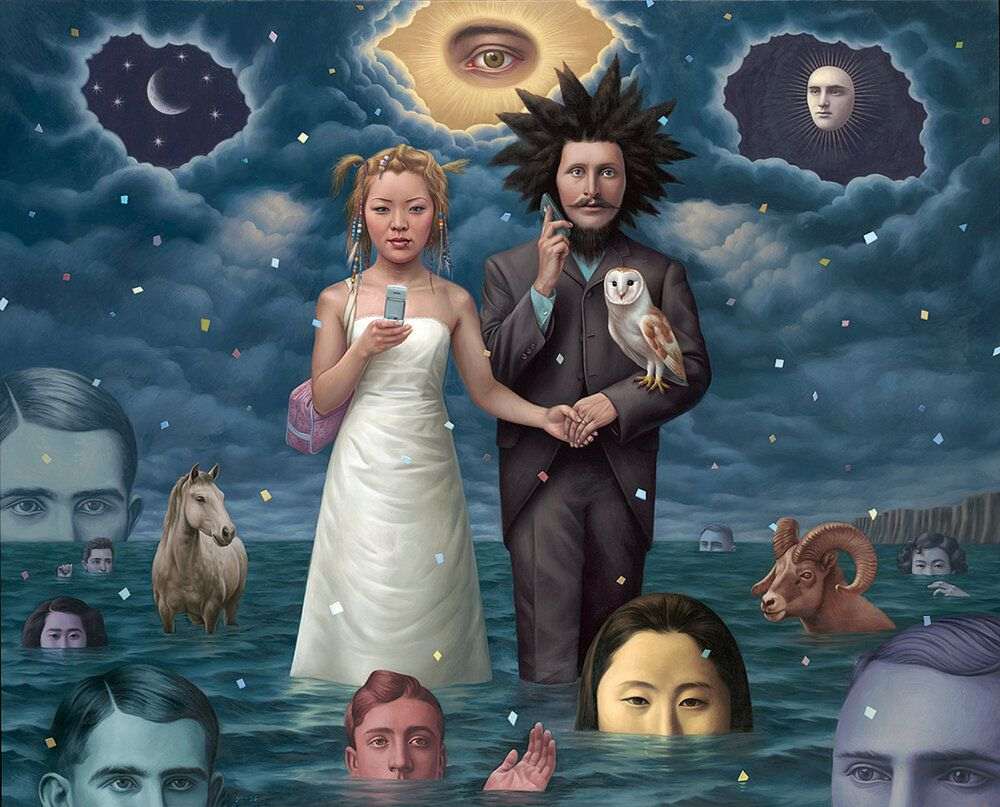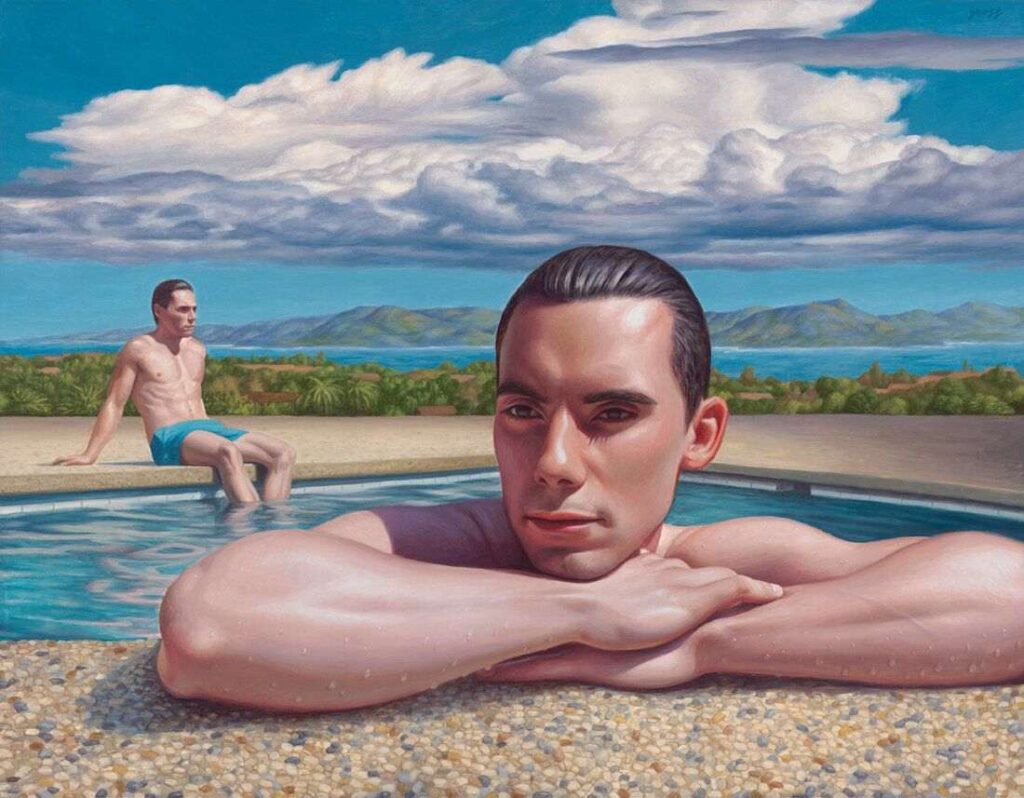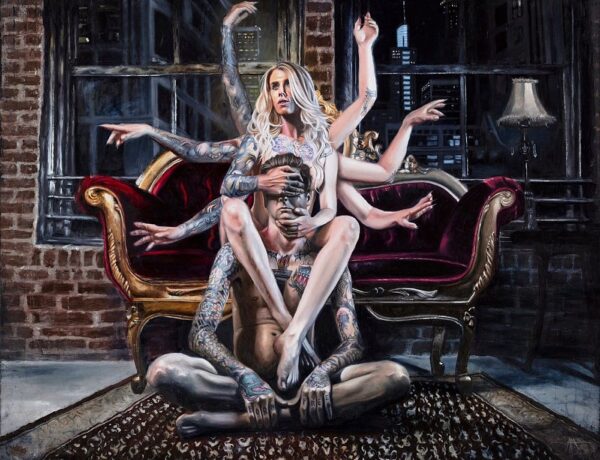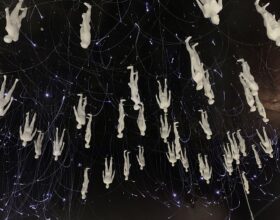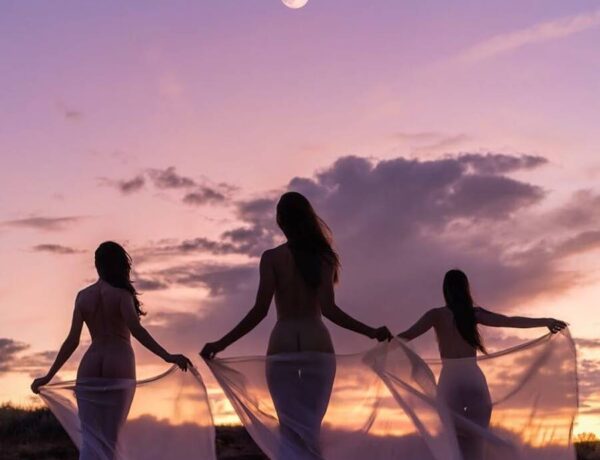In artist Alex Gross’ realm, Mona Lisa smokes. She puts on her lush, pink velvet sleeping robe, creasing as she walks and seats on the wooden chair positioned on the cliff. The landscape behind her reminisces the Hollywood depiction of hell: dancing flames, orange clouds, black smoke, and the sun that never sets. She grins as she angles her body, her lit cigarette locked between her fingers and her gleeful clown makeup a contrast to the scenery behind her. She poses for Alex whose oil on canvas work introduces the graphic novels and pop culture infused into the rest of his artworks.
Marrying Mona Lisa with Joker on a canvas only portrays one of the many comic-book influences Alex draws from. “Comics are the reason I am an artist,” he tells me. “As a child, I always wanted to be a comic book artist, and copying imagery from comic books was how I basically first learned to draw. Nowadays, many of my favourite childhood comic books have become the most popular movies on Earth. It is nice to come back to some of the things that first inspired me to draw so many years ago.”
The Los Angeles-based artist enjoys a good dose of pop culture to satiate his artistic thirst and personal enjoyment. “Not all pop culture, of course,” he says. “I cannot say I have listened to a new pop music album in many years, so that kind of pop culture is fairly opaque and unappealing to me.”
Expect to see Alex sit down and watch movies and shows that feature comic book characters, science fiction, and fantasy. “I do not paint pop culture that I do not personally care about,” he says. “I cannot say I watch many shows or movies, but I think I see enough of them. I prefer the Marvel cinematic universe to the extended Star Wars one, though I also enjoyed The Mandalorian quite a bit.”
Pop culture may still be relevant to the images he depicts, but the artist, as he speaks with me for Beautiful Bizarre, has revealed other themes outside his comic book realm. The rest of the conversation unveils the portraits of real humans as a core of his artistic voice and the changes he has made so far in his style and imagery.
Nowadays, many of my favourite childhood comic books have become the most popular movies on Earth. It is nice to come back to some of the things that first inspired me to draw so many years ago.
Exclusive Interview with Alex Gross
You implied that you changed a few elements of your style in art compared to a decade ago. How would you describe your style before and that of today? Was the transition necessary or intuitive?
Any artist whose work has not changed in the last decade must be on autopilot, I think. I have evolved and grown throughout the years. I have different interests now, and I think my audience may also have different interests than ten or twenty years ago, which was around the time I started showing in galleries.
In some of your paintings – such as Thunderhead, Suspicion, Dual Selfie, and Voice (after Tooker) – there’s a sense of secrecy in the imagery. It may be about a life one secretly wants to live, a hidden agenda, or an obscured fact that may ruin a relationship. Is secrecy a theme in your art practice? How do you conceive the themes of your paintings?
These pieces, which all were made around five to seven years ago, are much, much different from the recent pop culture work. They do indeed share some themes and are meant to be somewhat vaguely allegorical.
My idea for works like these is for the viewer to be motivated to fill in the gaps in the imagery and try to figure out what happened. One piece from around this time called “The Meal” used to elicit all kinds of various interpretations from viewers who saw it in my home while it was here.
I do not like to make work that is too obvious or overtly political or pedantic.
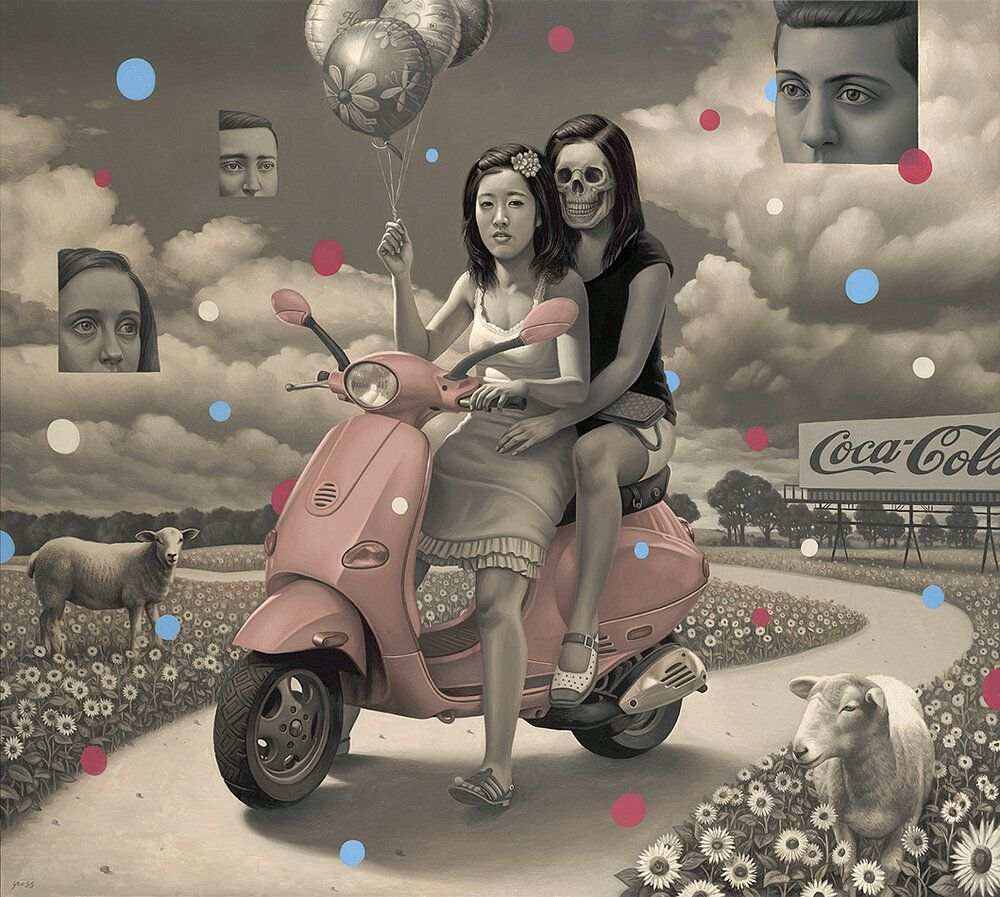

Your interpretation of Mona Lisa – #monalisa2018 – caught my attention. Here, she wears dreadlocks made of beads, a bead piercing on her lower lip, and a skull-printed tank top, while holding the new model of a smartphone brand and a tall, plastic cup of soda. Is this a portrayal of the social-media generation? How do you perceive the rampant reliance on social media and smartphones in the modern age?
No, the #Monalisa2018 is not a portrayal of the social media generation. Probably my painting called “Android” is a better portrait of that. The Mona Lisa piece was just something where I mixed in some modern elements, juxtaposed them with the classic image of DaVinci’s original. I thought it would be funny to see her with this hairstyle. I cannot say this style is particularly relevant now since very few people wear their hair this way. It is just funny and absurd.
I would like to do a series of Mona Lisa paintings where she has all sorts of hairstyles and accessories. However, some of them might seem to be cultural appropriation, so I might stay away from that until the social media frenzy of canceling everyone dies down a bit.
As a child, I always wanted to be a comic book artist, and copying imagery from comic books was how I basically first learned to draw.
Influences of the Eastern culture have appeared in some of your paintings. Is this a fascination with such a culture, or a personal study? Where did this stem from?
I was very influenced by Japan around 24 years ago and got to do a fellowship there for a few months where I acquired all sorts of Japanese pop culture imagery. It was a big part of my early painting process.
You have also dabbled in mixed media and still infused your artworks with pop culture references. Why did you explore this medium? How did it happen?
I have collected vintage photos for many years now. At some point, over a decade ago, I started painting on some of them. Eventually, I had the idea to make them into pop culture characters.
When it comes to your style or approach, do your mixed media artworks differ from your paintings?
Working on top of old photos has become a nice change of pace from my larger oil paintings on canvas. Those can take months to complete, but the mixed media pieces are extremely fast.
I enjoy doing them and they are not technically challenging to do. It is purely for the fun of it, and I have always made sure to keep them fairly inexpensive too so that people can buy something original from me that will not break the bank.
I do not like to make work that is too obvious or overtly political or pedantic.
You seem to have a penchant for portraits or, at least, using a human replica as the primary subject. Is it because of the emotions their facial features and/or expressions evoke? How do you find the models for these images – at least for those who did not need pop culture references?
I have always been interested in drawing and painting people more than anything else. I enjoy some landscape art, but it has never been my thing. Since I was young, I always have drawn people.
Working with, and painting, my own models are always fun and rewarding. I do not get to do it as much these days. As for the models, some were friends and former students while others were professional models that I hired.


I have to ask, do you have a personal favourite in all that you have created, so far?
I do not have one favourite piece. I have favourite pieces from different eras of my career. My most recent piece, called “Prison Of The Mind,” is one of my favourites from the last several years. “Sunday in the Park with Reptilians” is a favourite from around five years ago. “Premonition” is over a decade ago, but it is one I am still very fond of, as is “Signals.”
My idea for works like these is for the viewer to be motivated to fill in the gaps in the imagery and try to figure out what happened.
Do you have any upcoming shows, events, or exhibits you’d like to share?
As a matter of fact, I do not! I made a conscious move to go away from solo exhibitions around five years ago. The whole model of doing shows every one or two years does not work for me any longer.
My model these days is to do work that I enjoy and make print editions of some of it. Sprinkled in, there are some commissions that I also take on when they feel right for me. And here and there, I will do a piece for a group show at a few different galleries that I still work with, but ultimately, I decided to be more independent in my work a few years ago, and that has worked out quite well for me.


